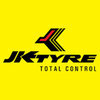Filter interviews by
BHARAT TECHNO PLAST Senior Quality Engineer Interview Questions and Answers
BHARAT TECHNO PLAST Senior Quality Engineer Interview Experiences
1 interview found
Interview Questionnaire
2 Questions
- Q1. Job profile n description n so all
- Q2. About spc n MSA
Top trending discussions






Interview questions from similar companies

I applied via Recruitment Consulltant and was interviewed before Oct 2021. There were 4 interview rounds.

(6 Questions)
- Q1. Brief about yourself
- Ans.
I am an experienced Senior Quality Engineer with a strong background in quality assurance and process improvement.
Over 10 years of experience in quality engineering
Expertise in developing and implementing quality control processes
Proficient in conducting audits and inspections to ensure compliance
Skilled in analyzing data and identifying areas for improvement
Strong knowledge of quality standards and regulations
Excellen...
- Q2. Why you want to change job
- Ans.
I am seeking new challenges and opportunities for growth in my career as a Senior Quality Engineer.
Seeking new challenges and opportunities for growth
Looking for a more dynamic and innovative work environment
Desire to work with a larger team and learn from experienced professionals
Want to contribute my skills and expertise to a company that aligns with my values and goals
- Q3. Your family background
- Ans.
I come from a diverse family background with a mix of cultures and traditions.
My parents are from different countries, which has exposed me to different languages and customs.
Growing up, I celebrated holidays and traditions from both sides of my family.
Having a diverse family background has taught me to appreciate and respect different perspectives and ways of life.
- Q4. Do you know about motors
- Ans.
Yes, I have knowledge about motors.
I have experience working with various types of motors such as AC, DC, and stepper motors.
I am familiar with motor control systems and their components such as drivers, encoders, and sensors.
I have worked on projects involving motor testing and troubleshooting.
I have knowledge of motor specifications and their applications in different industries.
I am proficient in using tools such as...
- Q5. How long will you work for us
- Ans.
I am committed to working for the company for the long term and contributing to its success.
I am looking for a stable and fulfilling career, and I believe this position aligns with my long-term goals.
I am excited about the opportunity to make a significant impact in this role and grow professionally within the company.
I am committed to continuous learning and development, and I believe this company provides the right e...
- Q6. Your current ctc and expectation
- Ans.
I prefer to discuss the salary range for this position before disclosing my current ctc and expectation.
I am open to negotiation based on the responsibilities and requirements of the role.
I am looking for a competitive salary package that aligns with my experience and skills.
I am willing to consider other benefits such as health insurance, retirement plans, and vacation time.
I am confident that we can come to a mutuall...
(2 Questions)
- Q1. What is the difference between accuracy and precision
- Ans.
Accuracy refers to how close a measured value is to the true value, while precision refers to how close multiple measurements are to each other.
Accuracy is the degree of closeness between a measured value and the true value.
Precision is the degree of closeness between multiple measurements of the same quantity.
Accuracy is related to systematic errors, while precision is related to random errors.
Accuracy can be affected...
- Q2. What is PPAP and SPC
- Ans.
PPAP stands for Production Part Approval Process and SPC stands for Statistical Process Control.
PPAP is a standardized process in the automotive industry to ensure that all parts meet customer requirements.
SPC is a method of monitoring and controlling a process by analyzing data to identify and reduce variation.
PPAP includes documentation such as design records, engineering change orders, and test results.
SPC involves ...
(1 Question)
- Q1. Do you know about motors
- Ans.
Yes, I have knowledge about motors.
I have studied the principles of motors and their applications.
I have worked with motors in my previous job as a Quality Engineer.
I am familiar with different types of motors such as AC motors, DC motors, and stepper motors.
I have experience in testing and validating motors for quality and performance.
I am aware of the safety precautions that need to be taken while working with motors...
Interview Preparation Tips
- Motors
- Alternator
- PPAP
- GD&T
- SPC
- Apqp
- NPD
- 7Qc
- SGA
- Qit
- 8D

I applied via Referral and was interviewed before Sep 2020. There were 3 interview rounds.
Interview Questionnaire
1 Question
- Q1. Please explain about your profile
- Ans.
Experienced Senior Engineer with a strong background in software development, project management, and team leadership.
Over 10 years of experience in software engineering, specializing in full-stack development.
Led a team of 5 engineers in developing a scalable e-commerce platform, resulting in a 30% increase in sales.
Proficient in multiple programming languages including Java, Python, and JavaScript.
Implemented Agile m...
Interview Preparation Tips
Be bold in your explanations.
Questions mainly fall from your profile explanation.
Try to tell what you have worked with.

Interview Questionnaire
2 Questions
- Q1. Software tool test on simple component
- Q2. You can use any tool to clear that.

(2 Questions)
- Q1. About drive and working
- Q2. About plc and working
- Ans.
PLC (Programmable Logic Controller) is a digital computer used for automation of industrial processes.
PLCs are used to control machinery on factory assembly lines, amusement rides, or light fixtures.
They operate using a programmable memory to store instructions for specific tasks.
Example: A PLC can automate the process of filling bottles in a beverage factory.
PLCs can be programmed using ladder logic, structured text, ...
(2 Questions)
- Q1. About family and members
- Q2. Salary structure and expectations
Interview Preparation Tips

I applied via Referral and was interviewed before Oct 2021. There were 3 interview rounds.

(3 Questions)
- Q1. What are the Siemens plc models?
- Ans.
Siemens plc models include S7-1200, S7-1500, S7-300, S7-400, and LOGO!
S7-1200
S7-1500
S7-300
S7-400
LOGO!
- Q2. What is the spc?
- Ans.
SPC stands for Statistical Process Control, a method used to monitor and control processes to ensure they are operating efficiently and within specifications.
SPC involves collecting and analyzing data to identify variations in a process
It helps in detecting and correcting issues before they result in defects
Common tools used in SPC include control charts, histograms, and Pareto charts
- Q3. How to configure the dp dp coupler?
- Ans.
To configure a dp dp coupler, set the parameters for communication protocol, baud rate, address, and data format.
Set the communication protocol to match the devices being connected.
Configure the baud rate to ensure proper data transmission speed.
Assign a unique address to the dp dp coupler for identification.
Choose the appropriate data format for the connected devices.
Test the configuration to ensure proper communicati...
(1 Question)
- Q1. Personal details
Skills evaluated in this interview

I applied via Job Portal and was interviewed in Jul 2023. There were 3 interview rounds.

(1 Question)
- Q1. Technical question about process
(1 Question)
- Q1. Background and certificate verification

I applied via Naukri.com and was interviewed in Jun 2023. There was 1 interview round.
(2 Questions)
- Q1. Tell me about yourself?
- Ans.
I am a seasoned engineer with over 10 years of experience in software development and a passion for innovative solutions.
Background: I hold a Master's degree in Computer Science from XYZ University.
Experience: I've worked at ABC Corp, leading a team to develop a scalable web application that increased user engagement by 30%.
Skills: Proficient in languages like Python, Java, and C++, with a strong focus on cloud technol...
- Q2. Parameters of costing?
- Ans.
Parameters of costing refer to the factors that influence the cost of a product or service.
Parameters can include materials, labor, overhead, and profit margin.
Other factors like transportation costs, taxes, and market demand can also impact costing.
Understanding and analyzing these parameters is crucial for accurate pricing and cost control.
For example, in manufacturing, the cost of raw materials and labor are key par...
Interview Preparation Tips

I applied via Job Portal
(2 Questions)
- Q1. About yourself, describe
- Q2. Technical question

Senior Engineer Interview Questions & Answers
Rockman Industriesposted on 30 Jan 2025
(3 Questions)
- Q1. About programming
- Q2. About working experience
- Q3. About 5S in shop floor
- Ans.
5S is a methodology for organizing and managing the workspace to improve efficiency and safety on the shop floor.
Sort: Remove unnecessary items from the workspace. For example, tools not used in the last month should be stored away.
Set in order: Organize tools and materials for easy access. For instance, labeling storage areas for specific tools.
Shine: Keep the workspace clean and tidy. Regular cleaning schedules can p...
Tell us how to improve this page.
Interview Questions for Popular Designations
- Senior Engineer Interview Questions
- Quality Engineer Interview Questions
- QA Engineer Interview Questions
- Production Engineer Interview Questions
- Junior Engineer Interview Questions
- Mechanical Engineer Interview Questions
- Assistant Engineer Interview Questions
- QA QC Engineer Interview Questions
- Show more
Senior Quality Engineer Interview Questions from Similar Companies
BHARAT TECHNO PLAST Senior Quality Engineer Reviews and Ratings
based on 4 reviews
Rating in categories
|
Quality Engineer
39
salaries
| ₹2 L/yr - ₹4.1 L/yr |
|
Senior Quality Engineer
10
salaries
| ₹3.6 L/yr - ₹6.8 L/yr |
|
Tool Room Engineer
10
salaries
| ₹3 L/yr - ₹5.2 L/yr |
|
Engineer
9
salaries
| ₹2 L/yr - ₹4 L/yr |
|
Junior Engineer
8
salaries
| ₹2.1 L/yr - ₹4 L/yr |

Yazaki

Delphi TVS

JK Tyres

Lucas-TVS
- Home >
- Interviews >
- BHARAT TECHNO PLAST Interview Questions
















